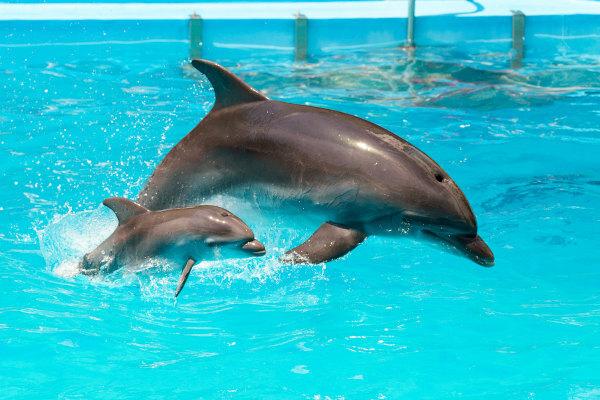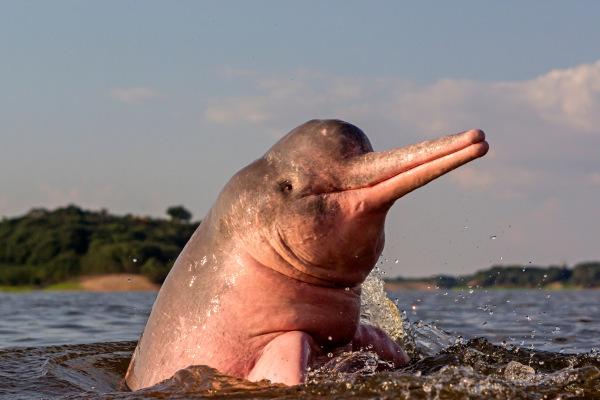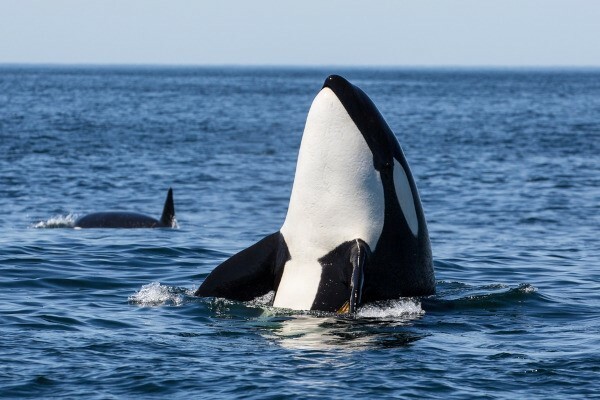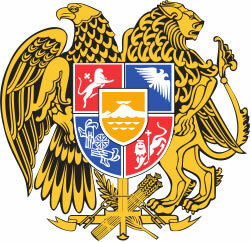Dolphin is a term used in reference to a group of aquatic animals that belong to the Delphinidae, Iniidae and Pontoporiidae families. In these families, we find animals such as the orca and the pink dolphin, which are also types of dolphins.
These mammals can be found in marine environments and also living in fresh water. They are carnivores and can feed on fish, molluscs and crustaceans.
Read too: Whales - animals that stand out for their large size
Taxonomic classification of dolphins
the dolphins belong to çlasse Mammalia, order Cetartiodactyla and suborder Cetacea. Cetaceans are divided into two living groups: Mysticeti and Odontoceti. True whales are in the Mysticeti group and have, instead of teeth, horny fins in the shape of flexible blades. the dolphins are included in the group of Odontoceti and have teeth. The name dolphin is given to cetaceans belonging to the Delphinidae, Iniidae and Pontoporiidae families.
General characteristics of dolphins
Dolphins live in an aquatic environment, with both saltwater species, such as the killer whale and spinner dolphin, and freshwater species, such as the pink dolphin. have
hydrodynamic body, oar-shaped forelimbs and vestigial hind limbs.They also stand out for their basically hairless body, these structures being observed in the muzzle region right after birth. Pink dolphins have tactile hairs on their rostrum. The shape of the body, the presence of fins and the absence of hair are important characteristics to ensure the locomotion of these animals in the aquatic environment. Also noteworthy is the thick layer of fat under the skin, which helps to prevent heat loss, thus acting on the thermoregulation of these animals.

Despite living in an aquatic environment, dolphins do not breathe through gills, having, like other mammals, lung-type breathing. Because they breathe through their lungs, they need to rise to the surface to capture the oxygen present in the atmosphere.
In addition, they have a breathing orifice, located at the top of the head, which works like a valve, opening when the dolphin rises to the surface and closing when it submerges.
Dolphins are animals that have a good vision, which they use, for example, to identify predators, group members and obstacles. Furthermore, have a location and orientation system called echolocation, which is based on emitting high-frequency sounds and capturing the echo after these sounds hit an object. Sounds are emitted by the vibration of the air ducts and directed to the external environment through a bulge located in the frontal region of the head, known as a melon. The echo is picked up by the jaw and ear, and the information is transmitted to the brain, which analyzes the characteristics of the object that was hit by the sound. With echolocation, dolphins are able to know the location, texture and shape of objects.

the dolphins they are very intelligent animals and have brains with very complex morphological and physiological characteristics. Furthermore, they have impressive communication systems and social habits. Many species live in groups, which can be formed by hundreds of individuals, which present elaborate behaviors and sound communication.
Dolphins, as well as several species of living beings, are threatened, mainly due to man's action. Accidental capture of these animals, as well as pollution of aquatic environments and tourism to observation without following the norms aimed at protecting these cetaceans can generate high mortality from this species.
Read too: Blue whale — the biggest animal in the world
dolphin species
As already pointed out, dolphins are not a single species. Next, we will meet some species of dolphins.
pink dolphin

The pink dolphin (Inia geoffrensis) é also known as "river dolphin" and is found in greater numbers in the Amazon and Orinoco river basins. It can reach about 2.5 meters in length and is characterized by having eyes reduced, large pectoral fins, wide tail fin, pronounced rostrum and evident melon and robust. They may also have tactile hairs on the rostrum.
Color varies with age. The young dolphin is dark bluish gray on the back and light gray on the belly. The adult is pale gray on the back and pink on the sides and belly. These animals are essentially piscivores (they feed on fish).
common dolphin
The common dolphin (Delphinus delphis) is a species that presents predominantly oceanic habitat. It is about 2 meters long and has a long, well-marked rostrum, as well as pectoral fins with pointed ends, high dorsal fin, which can be curved backwards or triangular, and wide caudal fin with central recess.
The coloration presents a complex pattern, with regions in dark gray, yellow, light gray and white. The back is dark gray to black. The anterior portion of the flanks, from the head to the region close to the dorsal fin, is yellow. The posterior region of the flanks is light gray and the belly is white.
Read too: Shark - an animal much feared in the seas and part of the fish group
orca

The orca (orcinus orca) is also known as killer whale., despite being a dolphin (family Delphinidae). It can reach up to 9 meters in length and has a short rostrum, large pectoral fins (in the shape of a oar and with rounded edges), dorsal fin wide and high, and caudal fin with an indentation. central. The coloration of this species is quite striking, with the dorsal region predominantly black and the belly region and above and behind the eyes white. The orca feeds on different animals such as fish, seals, sea lions and turtles.
spinner dolphin
The spinner dolphin (stenella longirostris)features coastal and ocean habitat, living in groups that may have hundreds of individuals. They have a complex social behavior and can reach around 2.4 meters in length. The rostrum of these animals is long and thin, the pectoral fins are small, the dorsal fin is large and triangular, and the caudal fin is small and with a central indentation.
They have a dark gray back, light gray flanks, as well as a dark spot around the eyes, which projects towards the rostrum, and a light gray band that starts from the eyes and goes towards the fins pectorals. This animal is called a spinner dolphin because it has a characteristic behavior., with surface jumps that involve several turns around its own axis.
By Vanessa Sardinha dos Santos
Biology teacher


